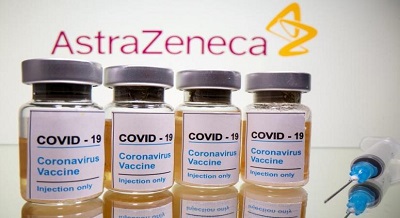London, (Asian independent) People with blood group O have an increased risk of cerebral venous thrombosis (CVT), or venous stroke, after taking the Oxford-AstraZeneca vaccine, administered as Covishield in India, claimed a large study.
Any occurrence of CVT within 28 days of receiving the Oxford-AstraZeneca vaccine is defined internationally as being a result of the injection, it said.
Previous research had found that patients with blood group A, were at a greater risk of severe Covid-19, as they constituted the majority of patients in intensive care.
The study, published in the Journal of the Royal Society of Medicine, included a total of 523 CVT patients, of which 82 patients suffered from CVT after receiving the Oxford-AstraZeneca vaccine, while the remaining 441 were unvaccinated CVT patients.
Participants in the study had their blood group tested, and the results were compared to determine the distribution of blood groups in the vaccinated and unvaccinated patients.
The study found that blood group O was more prevalent in patients who had experienced a venous stroke after receiving the Oxford-AstraZeneca vaccine (43 per cent) than it was in those patients who were unvaccinated venous stroke sufferers (17 per cent).
The researchers found that patients with blood group A were the most common by percentage among those in the unvaccinated group (71 per cent).
This was regardless of well-established venous stroke risk factors — such as gender.
“Our work suggests that it may be possible to predict those most at risk of cerebral venous thrombosis stroke following Covid-19 vaccination using a simple test for blood group,” said Professor Pankaj Sharma, from the Department of Biological Sciences at Royal Holloway, University of London.
“Those with blood group O, seem two-and-a-half times more likely to be in the post-vaccine risk group. Predicting who is more likely to suffer from stroke after vaccination may provide confidence to governments for using this vaccine — particularly in low- and middle-income countries, where cheaper and more easily transportable vaccines could prove more effective,” Sharma said.








